高级英语第一册unit13
- 格式:ppt
- 大小:239.50 KB
- 文档页数:52
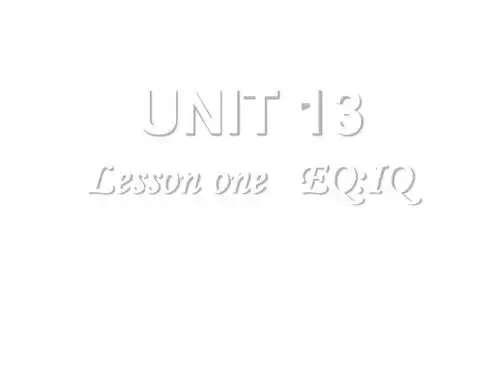
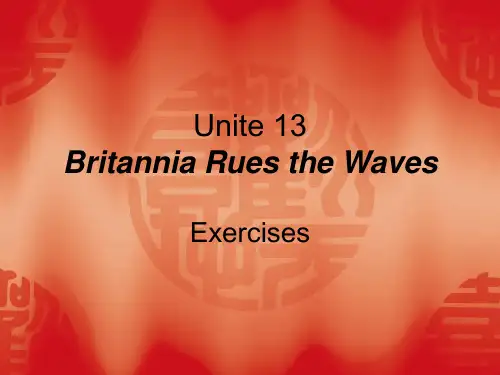

高级英语第一册13课13.Britannia Rues the Waves1. grab the headlines2.Yet shipping is the essential lifeline for the nation?s economy.3.It earn £1000 million a year in foreign exchange earnings: without our merchant fleet, the balance of payments would be permanently in deficit, despite North Sea oil.4. But now this vital British industry is more in peril than ever before.5.On almost all the major sea routes of the world, the British fleet risks being elbowed out by stiff foreign competition.6.The Russians and the Eastern bloc countries who are now in the middle of a massive expansion of their merchant navies, and carving their way into the international shipping trade by severely undercutting the Western shipping companies.通过大幅度削价与西方船运公司竞争已跻身国际船运界7.The merchant fleets of the developing nations, who are bent on taking over the lion?s share of the trade between Europe and America, Asia and the Far East—routes in which Britain has a big stake.大部分份额/ 利益攸关8.The Britain fleet no long dominates the high sea.公海, 外海9. In the early 1960s, the shipping companies cashed in on government grants and tax concessions.政府资助和减税优惠Let's cash in on the fine weather and go10.In the19th century, competition between sailing-ships and steam-ships became cut-throat, and price-cutting ruined many long-established companies. 老牌公司11.It was in fact a cartel, though the British ship-owners gave it the more dignified name of a “conference”. Stand the test of time.12.take some of the risk out of the dodgy business of moving goods by sea.13. They make it harder, perhaps, to make a good killing 大发横财/大赚一把in good times, because you have to share the trade with other conference members. But they make it easier to weather the bad times, because there is no mad, competitive scramble for the available trade.14. the quadrupling oil price15. By 1974, the industrialized world had begun its slide into the worst depression since the 1930s.16. As oil demand cut back, charter rates plummeted, and the estuaries of t he world became jammed with the steadily increasing numbers of moth-ball tankers.17. By 1976, the slump had begun to bite into the bulk carrier trade. Bulk carriers are ships that carry dry cargo of one particular kind, such as sugar, coal or wheat, with iron core being by far the most important. 驳船生意18.With the world steel industry deep in the doldrums, who need iron ore carriers?19. With its big bulk carrier fleet , the British shipping industry now began to feel the pinch.20. Bankruptcy / weather the economic storm /the scheduled freight-liner services—and that is where Britain?s fleet strongly entrenched. / liner-freight vessels follow agreed routes, or lines, and call at ports on agreed dates,沿着预先制定的路线,定期抵达各港口21. a shipment of tractor parts / the going freight rate22.It is an ideal “parcel” service for people with cargoes that are not big enough to make it worth chartering a whole ship. “零担运输”业务23.Plus 有利条件,优势It is also a plus for the ship-owners not to be dependent on only one customer. Liner ships carry all sorts of different cargoes—mainly finished manufactured goods—so, if there is a slump in one particular industry, provided there is still buoyancy in other industries, the line fleets can still survive (iv)them a distinct advantage over…工业制成品24.Much of Britain …s liner fleet rarely sees a British port. Our ships are extensive cross-trader.远洋国际商船25.Until recently, those routes were highly profitable for the Britishcompanies, and a major source of foreign currency for Britain. They are also the routes on which the Third World and the Russians are out to make the biggest inroads.26. Most emerging countries in the Third World are out to carry a bigger share of their trade in their own ships. Developing countries regard a merchant navy as something of a status symbol—the next thing to go for after a national airline.27.But P&O has no intention of throwing in the towel. The key tactic behind its strategy of holding on to the richest slice of the trade has been to move up-market—to go where the Third World cannot follow: into high-technology investment.丰厚的利润/ 高端市场28.Put up the money to pioneer the international deep-sea container service. / warehouse /dockside…and they are very secure against theft; except for a code number on the outside, there is no indication of what is inside the box.29…. Is far from being the whole answer to the Third Worldthreat. The developing countries are not out to compete with Western fleets by commercial means; they want to impose a set of rules which will guarantee them a major slice of the shipping trades.30.This demand has found official expression in the United Nations Conference on Trade and Development, UNCTAD. The UNCTAD liner code lays down that…正式提出/ 海运法规31.Revenue / Not enough countries have ratified the UNCTAD code yet to bring it into force. But if it does become universal, it could strike a severe blow to Britain?s liner trade.32.The Iron curtain countries represent an even greater and more organized threat to the future of Britian?s liner ships, and it is a threat that is much more difficult to counter/respond to.33…the growth in either its own trade or world trade would justify. Come into service/ And with its policy of excessively low freight rates, the Russian merchant navy has already made major inroads into Western trade. 超低运费策略34.Its seaborne trade with EEC/ It is biting deeply into the major cross-trading routes of the world. 他已经侵入到世界各大跨国贸易航线have already captured 20% of the cargo traffic on the busy sea- lanes of the North Atlantic.35. make a profit / hard currency 硬通货It doesn?t matter very much if they are operating at a loss; that can be made up by the Soviet government in roubles.36.But there is more to it than that for the Russians.还有别的目的,意义远非如此37.‘Mer cantile marine / merchant fleet商船队38.expand the Soviet reach well beyond its perimeters.39. So this mercantile marine capability is certainly a great advancein the Soviet ability to project their power at some distance from their own frontiers.40. And this is also part of a general Soviet hydrographic policy to map the oceans of the world, to get to know its ports and, above all, to deepen contacts with the states with whom the Russians are developing close trading ties.海洋勘测总规划41.Counter sth. at an international level42. Concerted action on that issue / coordinated response43. Trade department looks after shipping / Industry department oversees shipbuilding44. Ship-owners fear that saving jobs in Britain?s ailing shipyards comes well before saving its merchant fleet.病入膏肓的造船业45.British shipyards are currently churning out 24 vessels for Poland. The Poles were lured to Britain by the gift of a £28 million sunsidy and the promise that British shipbuilders would raise all the credit, so while our shipping fleet is under attack from communist ships, our government is using British taxpayers? money to cut their shipbuilding costs. 英国的造船厂最近正在为波兰赶制24艘船只。
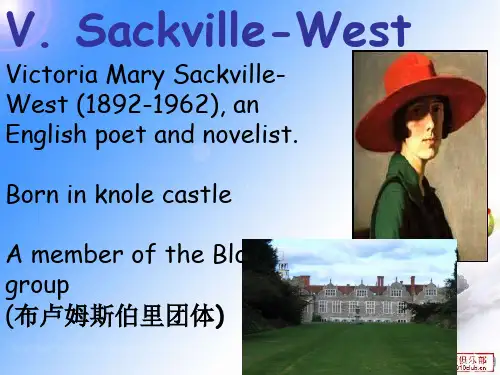
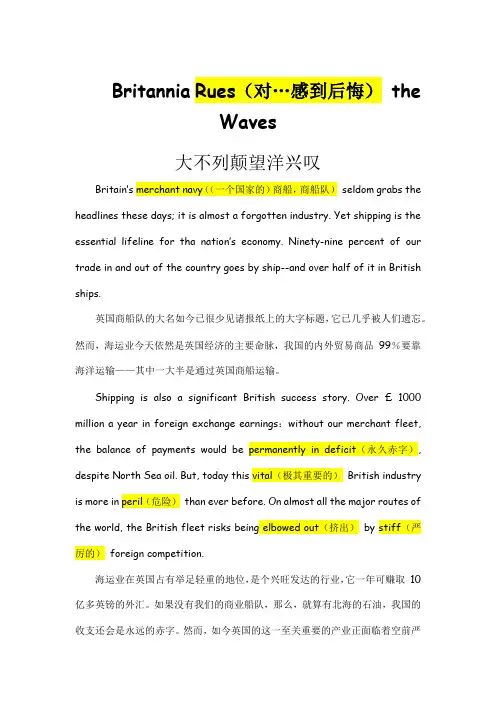
Britannia Rues(对…感到后悔) theWaves大不列颠望洋兴叹Britain’s merchant navy((一个国家的)商船,商船队)seldom grabs the headlines these days; it is almost a forgotten industry. Yet shipping is the essential lifeline for tha nation’s economy. Ninety-nine percent of our trade in and out of the country goes by ship--and over half of it in British ships.英国商船队的大名如今已很少见诸报纸上的大字标题,它已几乎被人们遗忘。
然而,海运业今天依然是英国经济的主要命脉,我国的内外贸易商品99%要靠海洋运输——其中一大半是通过英国商船运输。
Shipping is also a significant British success story. Over £1000 million a year in foreign exchange earnings:without our merchant fleet, the balance of payments would be permanently in deficit(永久赤字), despite North Sea oil. But, today this vital(极其重要的)British industry is more in peril(危险)than ever before. On almost all the major routes of the world, the British fleet risks being elbowed out(挤出)by stiff(严厉的)foreign competition.海运业在英国占有举足轻重的地位,是个兴旺发达的行业,它一年可赚取10 亿多英镑的外汇。

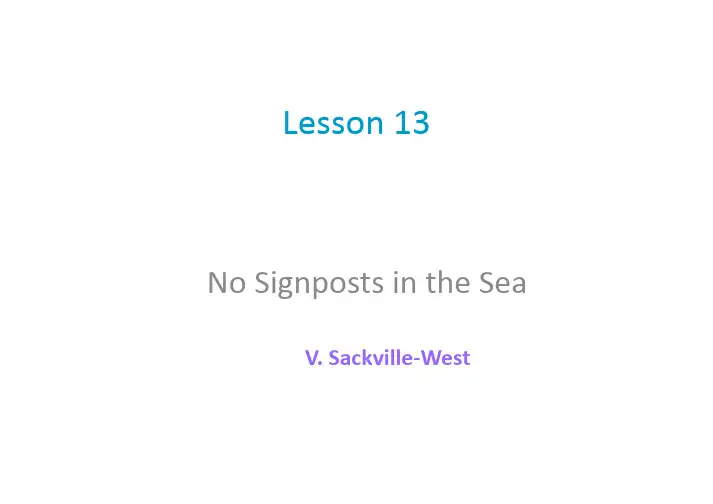
Lesson 13No Signposts in the SeaV. Sackville-WestB ACKGROUND K NOWLEDGEV. S ACKVILLE-W ESTN O S IGNPOSTS IN THE S EAS TREAM OF CONSCIOUSNESSA NALOGYSackville-West (1892-1962)•Her family background•Her marriage•Her worksSackville-West (1892-1962)•English poet and novelist•Born into an old aristocraticfamily---Knole Castle•Only child of the family•originally a gift from QueenElizabeth I to her forebearThomas Sackville•awarded the Hawthorndenprize in 1927 and in1933.•In 1946 Sackville-West wasmade a Companion of Honor(名誉勋爵士) for her servicesto literature.•died of cancer on June 2, 1962.Bloomsbury Group•an informal group•from mostly upper\middle-classprofessional families•Virginia Woolf, JohnMaynard Keynes, E. M.Forster•literature, aesthetics,criticism, andeconomics as well asmodern attitudestowards feminism,pacifism, and sexuality.Bloomsbury Group•Almost everything aboutBloomsbury appears to becontroversial•reacted against the socialrituals•believed in pleasure...Theytried to get the maximum ofpleasure out of theirpersonal relations•one's prime objects in lifewere love, the creation andenjoyment of aestheticexperience and the pursuitof knowledge'•Same-sex relations are commonamong the Bloomsbury GroupHer marriage•In 1913, married todiplomat and critic HaroldNicolson (1886-1968)•After their marriage, theytraveled widely when hewas in foreign office.•Her passionate affairs withwomen like novelist VirginiaWoolf , etc. (Bisexuality)•The marriage endureddespite their homosexualaffairs•They had two children, theart critic Benedict Nicholsonand the publisher NigelNicholson.Her works•A prolific writer, Victoria Sackville-West authored 15 novels, as well as biographies and travel booksPoems•The Land (1926)helped her to gain theinitial recognition in thefield of literary works, through which she wasawarded HawthorndonPrize and was praised asone of the mostbeautiful bucolics (田园诗) in English literature.Novelsbest remembered for her novels•The Edwardians (1930)•All Passion Spent (1931) •Family History (1932)bestsellers•PEPITA (1937)depicted theBoth were bestsellers and portrayed English upper-class manners and life story of her grandmother, a Spanish dancer.No Signposts in the seaAbout the novel •The 144-page novel•in the form of journal,narrated by EdmundCarr, 50, a well-knownpolitical columnistand a bachelor.•about the secret loveof a man destinedshortly to die•published in the yearbefore the author'sdeath and is her lastnovel.Edmund Carr•Edmund Carr, a political journalist, who is told that he only has a few months to live• a solitary man• a self made man•has never married•almost impersonal affairs with women who were never allowed to get too closeSecret Love•in love with Laura Drysdale, a widow in her late 30s•move in the same social circles but have never been close•a Pacific cruise-----to spend his last months on the same cruise, as close to Laura as possible •Not reveal his illness or lovecruise•spend time together on the ship & on various excursions at the ports they visit.•discuss their different ideas of marriage •intensely jealous of another passenger, Colonel •Edmund & Laura go to a native market & are nearly caught up in a riot.•The highlight of the trip is their overnight stay in a villa loaned to them by a stranger they meet in a port city•Edmund’s thoughts & feelings swing from intense happiness & contentment in his love for Laura & equally intense misery & jealousy.•Inspired by the vista of the sea and also Laura, Edmund rethinks his life and contemplates the value of lifeBackground for the novel•Sackville-West’s illness•Her love cruise ----spent several months every year with her husband, Harold Nicolson, cruising the Mediterranean, the Pacific or the West Indies.•The cruise in the novel is based on the one Sackville-West took in 1959 to India, Ceylon, Singapore, Manila, Saigon & Yokohama .Background for the novel•the book as an expression of Vita’s opinions & thoughts about love, marriage & relationships.•Vita & Harold’s open marriage•Through Edmund & Laura, Vita described her idea of an ideal relationship•Mutual respect, independence, separate bedrooms & the same sense of values.•Fidelity is important but it’s more important to avoid hurting the other person.•Anyone who knows about Vita’s life & her own marriage can see that these are very close to her own views.Theme•a meditation on life, love, what motivates human beings•contains real insight into the ideas of nature vs progress, the limitations of materialism•the value of life•The power of nature’s beauty to influence or change a person's perspectives or valuesQuestion on the text for discussion andreflection:• 1. Suppose one has been informed that one’s days in the world are numbered, what do you think one may choose to do as the best option?• 2. What does life / life value(s) mean to you?• 3. What’s your perception of Happiness?Topics for discussion and reflection•What is the general function of a “signpost”?•What is the special feature of a sea?•What can you predict about the implication of the title of the text?•Signpost: A post supporting a sign that has information or directions•Sea: vast, no boundary, darkness, hopeless •Idiom: at sea•1) On the sea, especially on a sea voyage; •2) In a state of confusion or perplexity (困惑); at a loss; confused:•I'm all/completely at sea with the new coins.•No signpost in the sea: no hope in the sea of love; confused in lifeStream of consciousness•The stream-of-consciousness novel commonly uses the narrative techniques of interior monologue where novelists describe theunspoken thoughts and feelings of their characters withoutresorting to objective description or conventional dialogue.•Probably the most famous example is James Joyce's Ulysses (1922),a complex evocation of the inner states of the characters Leopoldand Molly Bloom and Stephen Daedalus. Other notable examples include Leutnant Gustl (1901) by Arthur Schnitzler, an early use of stream of consciousness to re-create the atmosphere of pre-World War I Vienna; and William Faulkner's The Sound and the Fury(1929), which records the fragmentary and impressionistic responses in the minds of three members of the Compson family to events that are immediately being experienced or events that are beingremembered.•Narrative technique in non-dramatic fiction intended to render the flow of myriad impressions—visual, auditory, physical, associative, and subliminal—that impinge on the consciousness of an individual and form part of his awareness along with the trend of his rational thoughts. The term was first used by the psychologist William James in The Principles of Psychology(1890).•As the psychological novel developed in the 20th century, some writers attempted to capture the total flow of their characters' consciousness, rather than limit themselves to rational thoughts.To represent the full richness, speed, and subtlety of the mind at work, the writer incorporates snatches of incoherent thought, ungrammatical constructions, and free association of ideas,images, and words at the pre-speech level.I MPORTANT L ANGUAGE P OINTSPara. 1Saloon•saloon vs salon•Saloon: a large comfortable room where passengers on a ship can sit and relax; pub •Salon:•barbershop; a beauty salon• a fashion salona literary / art salonWay off•(an American expression meaning) far from where you are.•I heard the bells from way off.•Way off in the distance I could see the famous towers of the Manhattan skyline.•So she sat some way off, weeping bitterly.•Some way off: at a distance•A long way of: in the distancehave an eye for•have an eye for something: be good at noticing it or making judgments about it; to have a keen appreciation of; to be good at noticing what is valuable or attractive:•v.很能鉴赏, 很能看出,有判断力她很有审美能力。
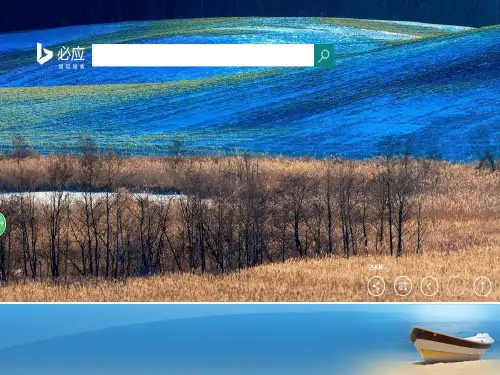
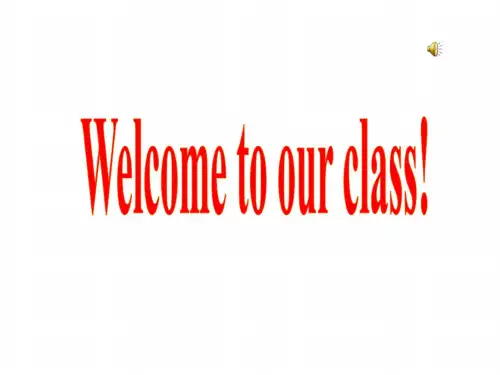
![[英语学习]高级英语第一册unit13](https://uimg.taocdn.com/d9ee743d866fb84ae45c8dc3.webp)
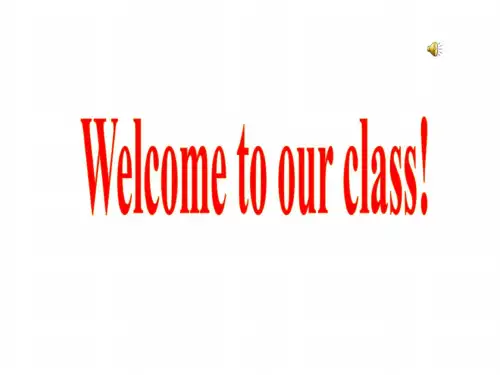
第一册unit 13 healthy eating-教学教案Unit 13 Healthy eatingTeaching Aims and DemandsWords and PhrasesFour Skills: stomach fever ought ought to examine plenty plenty of diet keep up with make a right choice short of fit gain now and then Three Skills: energy soft bar fuel chemical balance tasty boil mixture Spoken English:In the clinic / seeing a doctor:What’s wrong with you/What’s the matter with youLie down and let me examine you.Let me have a look.Where does it hurtDrink plenty of water and get some rest.I’ve got a pain here. This place hurts.There’s something wrong with back/my knee/my arm.I don’t feel well.Grammar:Use of Language:1. Master the function use of language as defined above.2. Help the students to finish the tasks of listening, reading, writing, speaking presented in the book and the exercise book through using what the students have learned.Learn the text about healthy eating. Get the students know about the basic knowledge of how to eat healthily.Important points:1. Talk about different kinds of food that one favorites.2. learn the basic knowledge of healthy eating.3. learn how to say in the clinic.4. Grasp the language points and grammar in the text.Difficult points: The use of modal verbs --- had better, should and ought to.Teaching aids: computer or slider-projectorWay of Teaching: Communication way of teaching, discussion and group work.Lesson 1Step 1 Warming-UpFirst show the students some pictures of dishes and so to introduce the topic of this unit.And then show the pictures on their text books and let them to decide what is junk food and what is not.Here the students may have a short ask and answer in pairs to themselves more engaged in the topic.Step 2 ListeningLet the students listen to the tape and be prepared to answer the questions below.Step 3 SpeakingShow the students the three situations as on P2. Then ask the students to prepared a dialogue according to the examples in pairs. Ask several pairs of students to present their dialogueAfter that list the useful expressions in their dialogue.Step 4 HomeworkPrepare for the next class.Collect some menus if possible for the next class.Lesson 2Step 1 IntroductionUsing the questions on P3 to introduce the new text.Step 2 Fast-reading1.What does the “fuel 〞mean in the first paragraph(It means different kinds of materials, such as protein, Calcium that we need to keep healthy.)2.What do we have to consider when we choose to buy or eat (What kinds of nutrients that the food contain.)3.What made our eating habit changing(Many things: what people believe, advice from companies and stores.)4. How can we feel and look fine(We ought to learn about our body and the fuel it needs to keep fit.) Explain the language points if necessary.Step 3 Carefully-readingHow many parts can be divided into(Three parts.)What’s the main idea of each part(1.our eating habits are changing. 2.why the eating habits are changing 3.the best way to develop healthy eating habits.)Step 4 TalkingAsk the students to take out their menus and read them carefully. Then prepare a dialogue that may happen between a customer and a waiter/waitress.Step 5 HomeworkFinish the exercise --- Vocabulary on P5. and P72-73Lesson 3Step 1 RevisionCheck the homework.First present the students the modal sentences with Modal Verbs and ask the students to make some sentences with them.Step 3 Consolidation(1) Finish the exercise on P5 and on P74(2)Take out a piece of paper with the column “Ask ###〞in order to make the students understand when you are giving advice it is better to use some sentences with had better (not), and ought(not) to,should(not). Then read a passage as an example and afterwards list the points you have to pay attention to when you give advice.1.give advice that will really help the person.2. be polite and sincereat last get the students to finish the following practice.Step 4 HomeworkFinish the exercise 3 on P74 in the students’ workbook.Lesson 4Step 1 RevisionLet some students read their reply to the letters on P74.Step 2 ReadingRead the text on P6 and then get the students to find the main idea of it (Snacks is also important . we need to learn something about snacks and the way to prepare it.)Ask the students to work in pairs to write the recipe for their favourite dish.We may first give the tips on P7 as a guide.Step 4 DiscussionFirst ask the students to read the passage on P75 and then give the following questions as the topic for the students to talk: What is a couch potatoWhat does one have to pay special attention to in order to keep healthy (food and exercise etc.)Step 5 HomeworkDo a general survey in order to learn about the differences between people’s eating habits and try to find which is healthier.第一册unit 13 healthy eating一文。
高一上Unit 13 教案(9)教学目标1.掌握本单元的重点词汇和短语;2.学会运用地道的口语表达方式描述现实生活中的情感和感受;3.培养学生的听力和口语表达能力;4.引导学生进行团队合作,提高他们的合作意识和实际操作能力。
教学内容1.生词和短语的复习巩固;2.使用情感词汇描述自己的情感和感受;3.听力训练和口语表达练习;4.分组合作完成任务。
教学准备1.教材《英语高一上册》第13单元的教材和教学辅助材料;2.多媒体投影仪和电脑;3.学生小组分组名单。
教学过程1. 复习和导入(10分钟)•回顾上一节课所学的单词和短语,并向学生复习相关的表达方式,例如:“hurt one’s feelings”、“be in a bad mood”、“cheer up”等。
•利用一些情境和图片让学生联想和描述相关的情感和感受。
2. 新课讲解(20分钟)•将生词和短语写在黑板上,并解释其含义和用法。
•利用多媒体投影仪展示相关的图片和情景,帮助学生更好地理解和记忆生词和短语。
3. 听力训练(15分钟)•播放相关的听力录音,并要求学生根据听力内容回答相关问题。
•根据学生的听力水平适当调整听力难度,帮助学生提高听力能力。
4. 口语练习(25分钟)•将学生分成小组,每组选择一个情景,例如“你在买东西时遇到不友好的服务员”,“你最喜欢的明星来到你的学校”,让学生使用本单元所学的情感词汇和句型来描述和表达自己的感受。
•让学生在小组内进行讨论和分享,并选出一个代表来进行口头汇报。
•引导学生使用地道的口语表达方式,帮助他们提高自己的口语表达能力。
5. 小组合作任务(30分钟)•安排一个小组合作任务,例如“学生们要根据自己的兴趣和爱好,设计一个创意广告宣传活动”,要求学生在小组内进行分工合作,充分发挥每个人的特长,最终形成一个完整的广告宣传方案。
•每个小组选择一个代表来进行汇报,其他小组成员做提问和评价。
•引导学生进行积极的合作和讨论,培养他们的团队合作和实际操作能力。
高一上 Unit 13 教案一、教学目标1.了解和掌握谚语和习语的定义和用法。
2.提高听说能力,能够流利地运用一些常用的谚语和习语。
3.学会如何运用谚语和习语进行写作和口语表达。
4.培养学生的团队合作能力和创造力。
二、教学重点与难点重点:1.熟练掌握谚语和习语的用法。
2.运用谚语和习语进行写作和口语表达。
难点:1.运用谚语和习语表达个人观点和情感。
2.掌握谚语和习语的多样性和灵活运用。
三、教学过程1. 导入(5分钟)•引入谚语和习语的概念,让学生思考有多少个习语和谚语被大家使用。
•引导讨论,谚语和习语在我们的日常生活中有何作用。
2. 展示与讨论(15分钟)•分发谚语和习语的列表,让学生团体活动,讨论列表中的每个谚语和习语的含义和用法。
•学生展示他们的讨论结果,让全班一起探讨和补充。
3. 案例分析(20分钟)•提供一些真实的案例,让学生思考如何运用谚语和习语来描述这些情况。
•学生分组讨论,并在小组内展示他们的谚语和习语。
4. 练习与表达(25分钟)•学生个人练习,根据给定的主题写一篇短文,要求运用谚语和习语。
•学生相互交流,并互相评价彼此的作品。
5. 总结与展望(15分钟)•教师总结学生在本节课中的表现和进步。
•引导学生思考和讨论谚语和习语的更多应用场景。
四、教学资源1.谚语和习语列表。
2.真实案例。
3.学生个人写作材料。
五、课后作业•学生继续探索谚语和习语的用法,并尝试在日常生活中应用。
•学生写一篇300字的文章,以“谚语和习语在我的生活中的应用”为主题。
六、教学反思本节课通过引导学生讨论与实际情况结合的案例分析,培养了学生的逻辑思维和表达能力,并通过写作和口头表达的练习提高了学生的英语实际运用能力。
但在教学过程中发现,部分学生对一些谚语和习语的理解和应用仍存在困难,需要进一步加强辅导和指导。
因此,下节课将重点解析一些难懂的谚语和习语,并结合实例进行讲解。
高级中学课本英语第一册13-14课高级中学课本英语第一册 13-14课转载▼标签:分类:英文资料教育LESSON THIRTEENTHE FOOTPRINTOne day, walking along the sands towards his boat, Crusoe saw in the sand the mark of a man’s foot. He was terrified at the sight. He looked round, but could see nobody. He listened, but could hear nothing. There were no other marks. Who had made the footprint? Was there someone else on this lonely island? Was it a savage? Crusoe stared at the footprint, full of fear.He hurried home, looking behind from time to time as he went. For some days he stayed in his cave, behind his wall. He was afraid to go out, even for food.But no savages came; and after a time he began to go out again. His dog, which was now very old, became ill and died. This made Crusoe very sad. He now felt even more lonely without his friend, the dog.He often thought about the footmark. Perhaps he had made it himself? He decided to go back and look again. The footprint was still there. He tried his foot in it, but it was much larger than his own. So there must be someone else on the island. Full of fear again, Crusoe returned home.He built another fence round his cave. Now he made holes in the wall and placed his guns in them, pointing outwards.But he still did not feel safe enough. He decided to look for another cave, where he could hide if savages came.He found a good place in the rocks, more than twelve feet high, with a narrow entrance. He stepped into the cave. Suddenly he saw two eyes glaring at him out of the darkness. Was it a man, or a wild animal? He hurried out into the daylight.Crusoe lit a fire and from it took a burning stick. He stepped back into the cave, holding the stick high above his head. He heard a noise, as if someone was breathing. He stopped. Nothing happened. He went farther into the cave.On the ground lay an old sick goat, which had gone into the cave to die. It was the goat’s eyes that he had seen in the darkness. As he looked at it, the goat rolled over and died.Crusoe looked about the cave. The ground and the sides were quite dry. Inside, the top of the cave was nearly twenty feet high. It was a good hiding-place.Crusoe had eleven guns altogether. He brought five of them to his new cave and a great deal of gun-powder. The cave was quite dark inside, so he made some candles to give light.Now he had a safe place if the savages came. Every day he climbed to a high rock near his cave to keep watch. And so the months and years went by.It was autumn, the time for Crusoe to gather his small harvest of corn. Early one morning, before starting work, he climbed up to his lookout.There, on the shore, were nine savages, sitting round a fire. Nearby were two canoes in which they had come to the island. They seemed to be eating something they had cooked on the fire. Crusoe watched, full of fear.As soon as the savages had gone, Crusoe returned home for two guns. Then he made his way down to the shore. He looked out to sea. The two canoes were almost out of sight.He went towards the fire, which was still smoking. Among the ashes he found bones. They were not the bones of an animal, but of a human being!Crusoe knew that the savages killed their enemies and ate them. He made up his mind to shoot them if they came again. But many months went by and no one visited the island.WORDS AND EXPRESSIONSFootprint n. 脚印,足迹Boat n. 小船;艇;小轮船Crusoe克鲁索(姓)Mark n. 痕迹;记号;商标terrify vt. 使恐怖;恐吓lonely adj. 孤独的;荒凉的island n. 岛;岛状物savage n. 野人;残酷的人 adj.野蛮的;残酷的stare vi & vt. 盯,凝视Stare at 盯着看from time to time不时地cave n. 洞,穴;岩洞after a time过了一段时间footmark n. 脚印,足迹fence n. 篱笆;栅栏outward(s) adv. 向外safe adj. 安全的;平安的rock n. 岩石;大石头narrow adj. 狭窄的step vi. & vt. 走,举步行走n. 脚步;步骤glare vi. 闪耀;瞪眼 n. 眩目的光;瞪眼 glare at向人瞪眼;怒目注视dark adj. 黑暗的darkness n.黑暗daylight n.日光;白天;黎明stick n. 小树枝;棒;棍;(手)杖roll vi. 打滚;滚动roll over 翻滚about prep. 在……周围;在……的各处adv. 周围;到处hiding-place n. 躲藏处;储藏处altogether adv. 完全;总共;总而言之powder n. 粉;粉末 gun-powder n. 火药candle n. 蜡烛gather vt. 聚焦;采集;收(庄稼等)lookout n. 守望,警戒;瞭望台shore n. 岸;滨canoe n. 独木桥make one’s way排除困难前进out of sight 看不见ash n. 灰;(常用复数)灰烬,灰堆bone n. 骨;骨头human being人NOTES TO THE TEXT1. 这篇课文是从英国小说家丹尼尔.笛福(Daniel Defoe, 1660-1731)著的《鲁滨逊漂流记》(Robinson Crusoe)的一个简写本中选取一段。